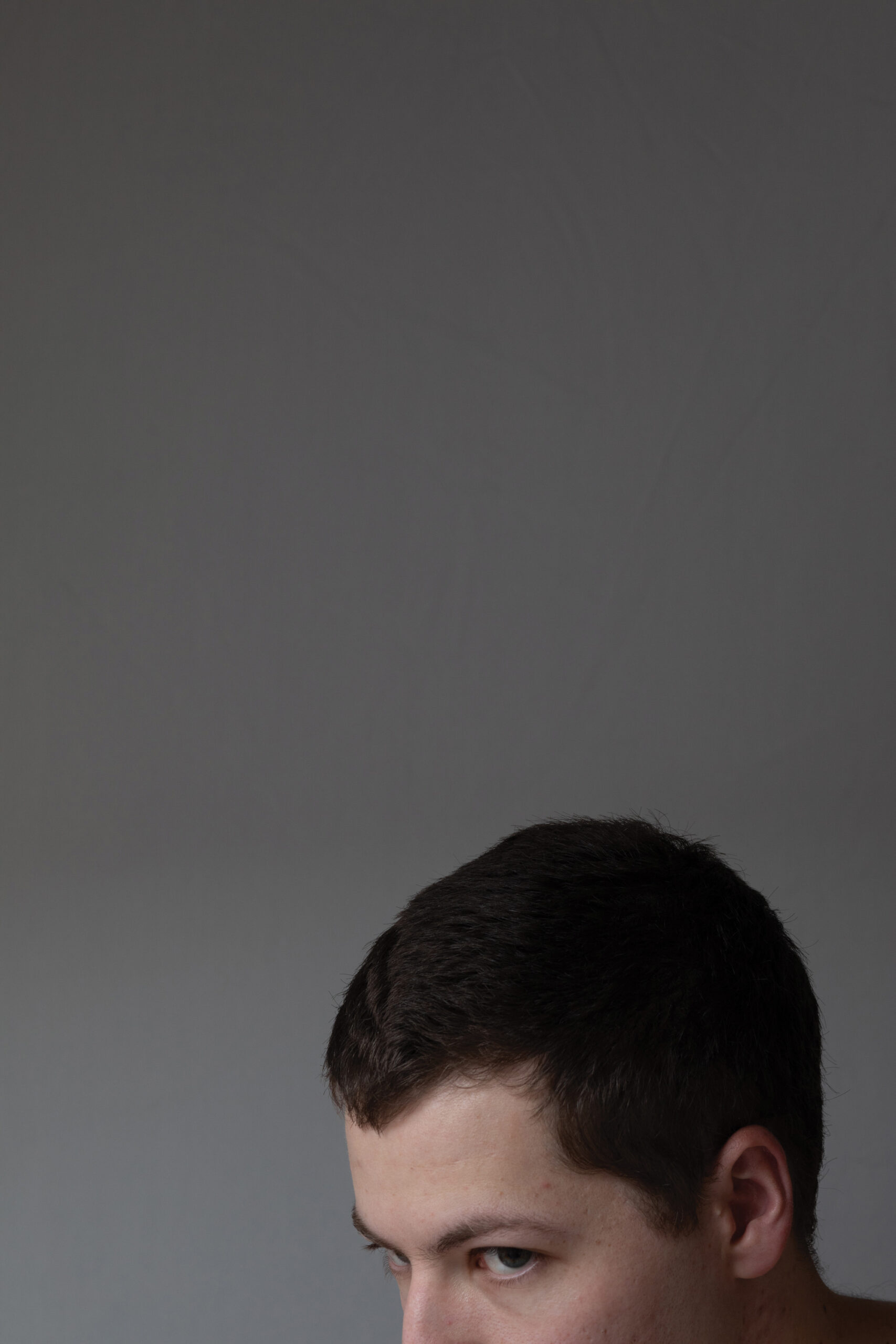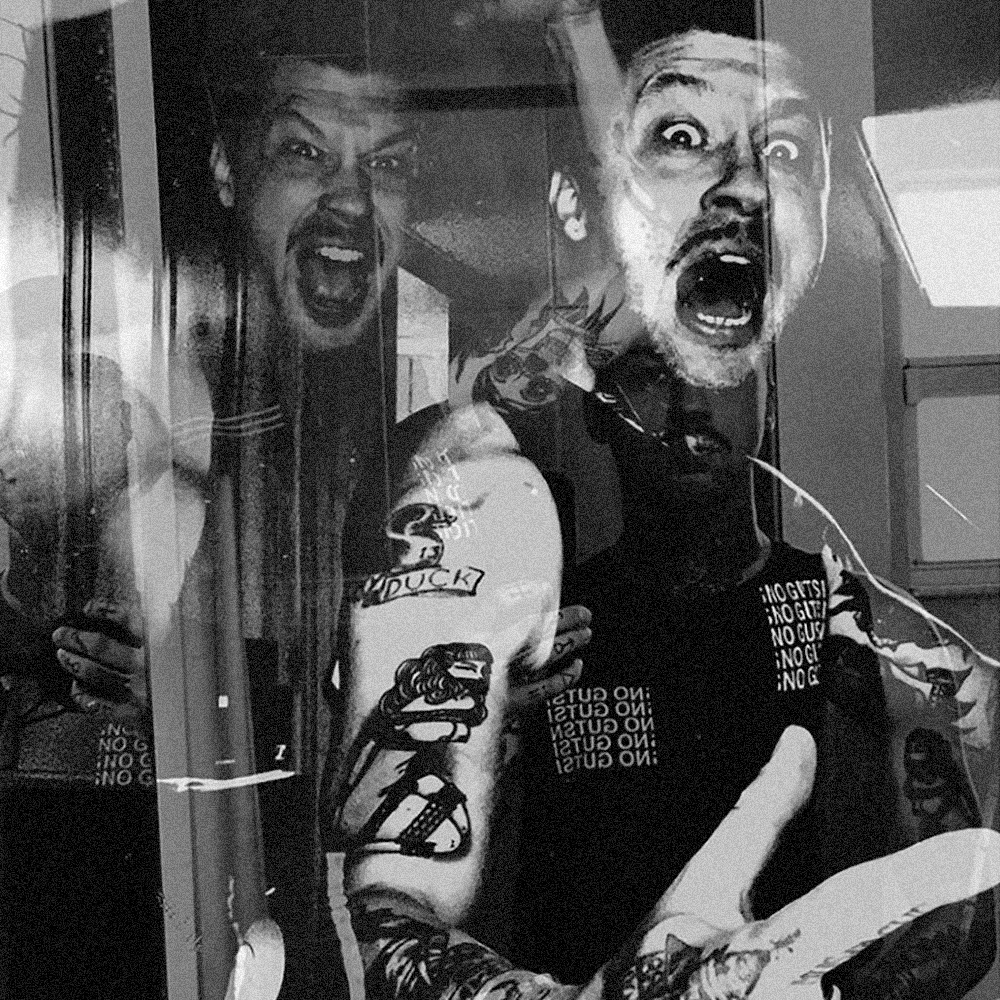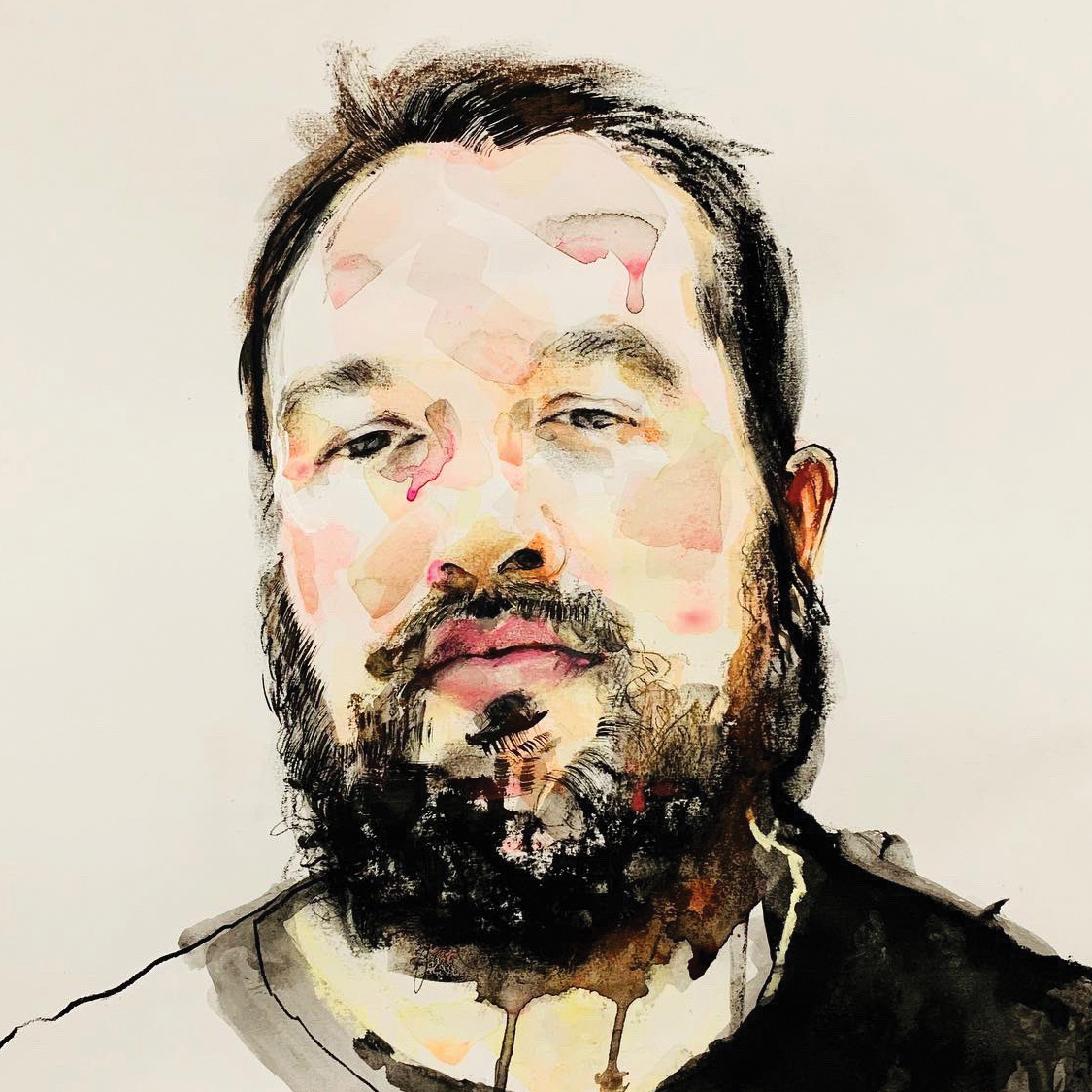MATTHEW DENICOLA is a Connecticut-based photographer, videographer, musician, and podcaster. With his many talents and deep, obsessive interests, Matt is very much a real renaissance man and an encouraging influence on the art pod scene. In 2020, Matt released the EP album 2.0 with his jazz composer brother, the two comprising the MADGOHAPPY electronic music duo, and in 2021 Matt began solo-hosting The Saltbox, a podcast featuring off-the-cuff monologues and life-affirming convos with all the cool kids on the right side of (art) history. Matt and I connected shortly after my interview with Adam Lehrer, whose guest appearance on The Saltbox concluded the show’s entertaining first season, in which Matt optimistically declared art dead. Matt’s since become one of my go-to guys to talk shop about our respective projects and spontaneous interests. With that, this interview served as a special occasion for Matt and I to shoot our usual shit—on record. The following was conducted over Zoom.
*
MATTHEW DeNICOLA: I grew up watching Seinfeld and Curb, and I never watched Woody Allen until recently. But when I started watching Woody Allen movies, I was like, “Man, this guy. I’m him.” Every movie, it’s like—even if it’s a comedy, it’s always like he’s scared of dying. That’s how I was for awhile.
RYAN SIMÓN: You feel like you’ve bucked your death anxiety then?
DeNICOLA: I wouldn’t say “bucked,” but it’s more suppressed as I’ve become preoccupied with other things I’m interested in—and then sometimes in the middle of the night I’m trying to sleep and it pops in my head and I’m like, “Fuck!” I remember one time in high school—I mean, this isn’t funny, but I just remember being in the shower and the shower thoughts just start running like the water, and I just started like screaming because I’d gotten into this panic.
SIMÓN: The shower’s a great place for that.
DeNICOLA: Yeah, man, but… that’s a whole other thing. I don’t even want to go into it. [Laughs] But yeah aside from Woody Allen—Todd Solondz is another one. I think that for the modern age and for growing up in the early 2000s, it’s just like maaan that guy nails it. For one, his set design is immaculate—like, just pay attention to all the details in the background. If you come from the Northeast and you happen to be a Jew, a lot of the things in his work seem to be familiar. He has a really particular sensibility that’s really funny, and he’s such an oddball sort of guy: it’s dark but—and that’s what people say about Solondz’ movies, like two people can watch it and one could be crying and one could be laughing. I find myself laughing most of the time, because he doesn’t have that “you’re supposed to feel sympathetic for one character over another” thing, you know? The phrase “It’s very human” tends to mean like, “Oh, let’s all hold hands, we’re all good at the end of the day,” but “human nature” to Todd Solondz is like we’re all capable of good and evil, but we’re also just people at the end of the day and “nature” doesn’t necessarily mean “good.”
SIMÓN: Solondz is so funny. He’s interesting because he has this sort of anti-PC edge, but it’s not really an “edge” because he delivers it in such an observational, almost dull, matter-of-fact way. He’s not coming at it with an agenda.
DeNICOLA: Not at all. I’m not even sure if he’s aware of—I mean, to a degree in his everyday life, I’m sure he’s aware of, you know, PC culture and obviously how it’s affected his movies—but like you said, he’s not driven by agenda and he also doesn’t make himself the like warrior of free speech. He’s just like if someone were to censor him, it’d just be an inconvenience to his work rather than him fighting back on political grounds.
SIMÓN: Right. I love his solution in Storytelling to work around the censors [laughs] with the red box.
DeNICOLA: [Laughs] Yelling the most profane thing. I’ve watched everything by him, but yeah Storytelling deserves a rewatch.
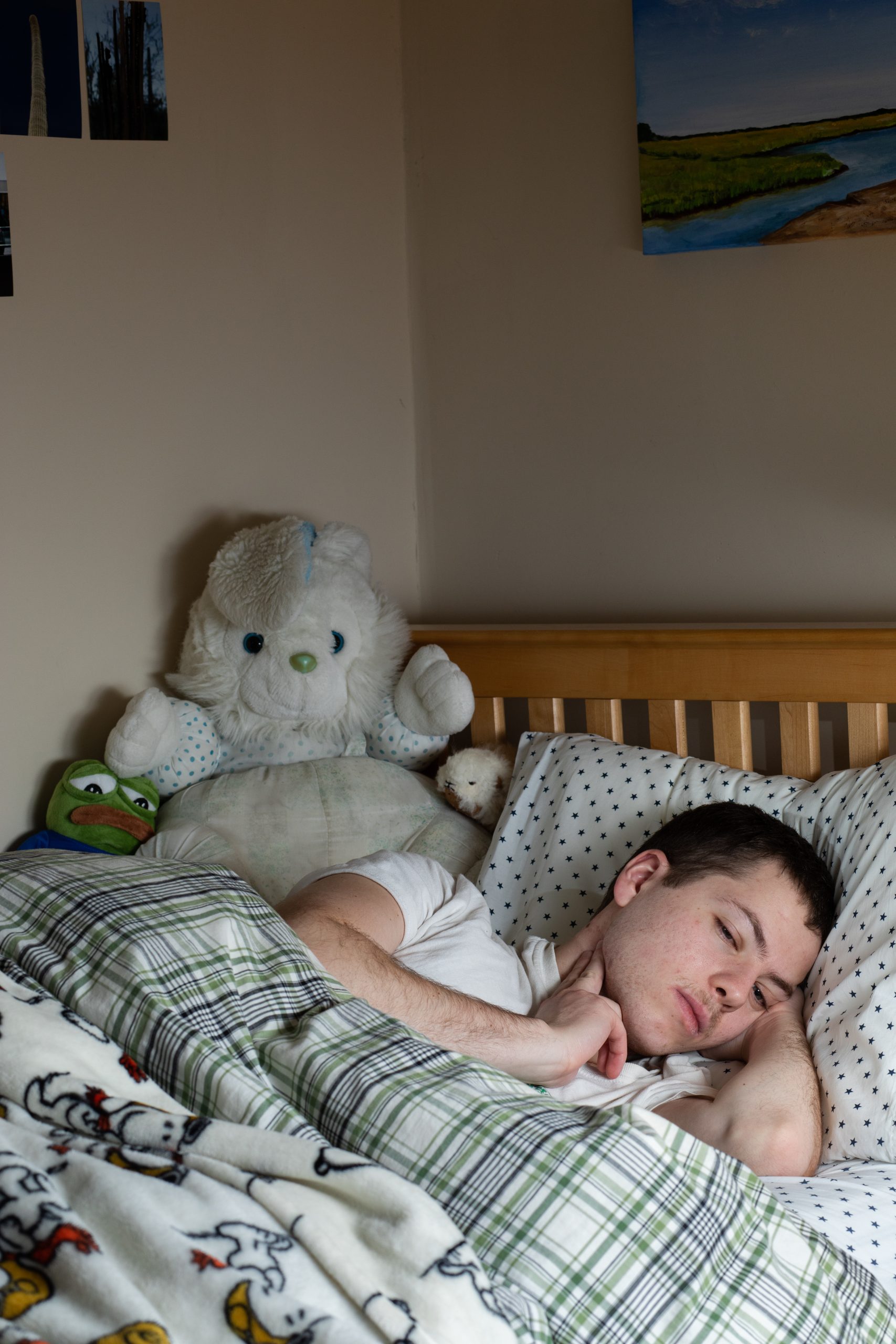
SIMÓN: You’re midway through reading Paglia’s Sexual Personae, right?
DeNICOLA: I would say a quarter of the way. I got sidetracked reading Here’s the Situation by Mike The Situation. I had to take an Apollonian detour.
SIMÓN: [Laughs] Yes. I was actually Pauly D for one the Halloweens back in college.
DeNICOLA: Yeah buddy! Cabs are here!
SIMÓN: Yeah, man, I had long hair then, so I got the Pauly D blowout and everything, and a lot of JWowws and Snookis were out that weekend. That was a fun time.
DeNICOLA: Wait, let me turn on my camera for a minute, so you can see my new hair…
SIMÓN: Oh, no shit. Looks good.
DeNICOLA: Yeah, I got it bleached the other day.
SIMÓN: You have a Marshall Mathers Slim Shady thing going on there.
DeNICOLA: I was frosting my hair for awhile, so it was more like JT, but now it’s Slim Shady.
SIMÓN: Awesome—but yeah on that note: I was just listening to your Jersey Shore episode, and it’s a good example of your podcast’s overall attitude—and just you in general—which is this unironic earnest-without-being-cheesy appreciation for culture. Jersey Shore, like much of reality TV, is such an easy target to “watch ironically” in this superior way. I mean, this all sounds cliché coming from our corner of Twitter, which is largely sincere in its interests, but you do embody that sort of Live Laugh Love spirit.
DeNICOLA: [Laughs] Live Laugh Lake. Live Laugh Lake. I guess I get fixated on things, because, you know, there seem to be two different types of people when it comes to culture—and I suppose it differs by medium—but some people are always looking for the newest thing. People listen to music and they’re happy finding a new album everyday. For me, I find one thing and I run it into the ground. You know, I like Jersey Shore and so I have to obsessively talk about it with everybody.
SIMÓN: Well, I’d say broadly, much of culture right now is in curation mode. We’re in this age of, like, obsessive archiving and taste-making—of curating and discussing all the great works of the past century or so and making an art form of those discussions themselves.
DeNICOLA: Yeah, Ortant calls it the “Sea of Archive.” There’s so much out there, which is why I like listening to my favorite artists talk about their favorite artists, because they’re going to unearth some gems you’ve never heard about. You know, I try to be a deep cuts guy sometimes, but, you know, there are works that are at the top for a reason, right—but that are in the mainstream. For example—and I don’t watch anime but—people who are really into anime and watch really niche stuff, they’ll look at the Studio Ghibli stuff or Naruto or Cowboy Bebop and they’ll be like, “Oh, that’s good,” even though it’s mainstream. And but those mainstream artists, they’ll point you to some really deep cut people who aren’t in the mainstream but are really good, and those are the people I like to study from. There’s that saying about being better than your favorite artist’s favorite artist. Like, maybe you can’t be Coltrane, but who did Coltrane look up to? Maybe you can try being better than them. But artists can be, you know… what’s the word… not fickle but… artists can be weaselly in their interviews when asked, “Who’s your favorite artist?” You know? Like they don’t want to reveal themselves.
SIMÓN: That’s Harold Bloom’s “anxiety of influence.” I haven’t read the book Anxiety of Influence yet, but it seems fairly straightforward: it’s essentially his theory on artists’ anxiety around being influenced by their predecessors and having an “authentic, original” voice and, like, psychologically concealing from others and even from yourself who directly influenced your work and all that.
DeNICOLA: Yeah, yeah—every artist has to struggle with the originality problem, but the more you worry about it, the more you can’t escape it.

SIMÓN: Do you feel that anxiety throughout your work? Because, I mean, you have various projects from photography to podcasting, music, et cetera. Is there a unified voice or mission you’re working out there—are they all part of the same project to you—or are you just tinkering with each medium?
DeNICOLA: I’d say there is a voice—look, all the things take time, and with the podcast, I really just started that. I’m still coming into my own there. In terms of photography, at this point I have a distinctive style when it comes to personal work. Sometimes I’m able to separate the different modes I shift into—like, when I’m doing commercial photography I’m limited to a certain style, but my process of photography as an artistic practice is more diaristic. It’s more like I’m documenting what’s happening to me on a daily basis. I feel like my style is unique in a way, though I’m out of bounds when it comes to feedback from other people since I’ve graduated, because I don’t have a community anymore to share my work with, so I think sometimes it’s maybe to a fault, that maybe I’m operating outside of whatever current photography discourse that’s happening. I can’t really think of what my work compares to—I mean, maybe you could probably pull up some stuff—but with music, for sure when I started I don’t think I was super concerned with originality. I did a music project with my brother Andrew—we have a group called MADGOHAPPY—and he comes from a jazz background. We put out an EP called 2.0 and the essential workings of that project were like—well, he had all this jazz and music theory knowledge, and I would take what he was doing and fit it into the things I was interested in, like electronic music and hip-hop. We would take, like, sus chords or whatever complex chord structure he was doing and I would fit it into these really digital harsh drum patterns—because I used to play the drums. So I’d say that, for me, originality’s not the problem but rather finding an audience that’s interested in the same things I’m interested in.
SIMÓN: Do you come from an artistic family then? Were “the arts” always present at home growing up?
DeNICOLA: My parents are very encouraging of me and my brother and our artistic pursuits. Jazz was huge growing up in our household. My great uncle Howard—big on music. My grandpa listened to jazz, he passed that to my dad, he passed that to my brother. I know a bit about jazz, but they’re like huge on it—they know all the history and all that stuff. So for my family, there’s a bit of that here and there, but my mom and dad are not artists.
[Ryan’s girlfriend Kim enters his room.]
SIMÓN: [To Kim] Oh hi.
KIM: You want a shot of whiskey?
SIMÓN: Sure, and can I get some more wine? [To Matt] This is my lady.
KIM: Hi.
DeNICOLA: Hii therrre, how you doing?
SIMÓN: You like his Marshall Mathers hair?
KIM: Oh yeah. I was thinking about doing the same thing but… [laughs]
SIMÓN: No you were not. [Exit Kim] I told her I’m having a few drinks for this and now we’re all just drinking I guess.
DeNICOLA: There you go. I don’t drink at all.
SIMÓN: That’s good, dude. Drinking during lockdown just made everyone fat. I was a tub of goo start of lockdown from drinking and had to take some time off. It’s awful.
DeNICOLA: Yeah, I got fat, too. [Laughs] I put on a good amount.
SIMÓN: Has lockdown been good for you artistically?
DeNICOLA: I graduated in 2020 virtually, so we never got a formal graduation. I had all of my school experience in-person up until the last half of the last semester. So, in 2020 we put out 2.0, the music project, but in terms of output, at least for photography, it was not good—but 2021 was a really great year in terms of consuming content, because that was when I got involved in this scene and just started watching so many good movies and reading books, which I think has informed me in a different way.
DeNICOLA: Most of all my photography is candid to a degree. The photos from LA that I posted on Twitter, I literally just photographed everything I did. And, you know, people notice the camera, people may be sensitive to it, and we all to a degree act on camera, because we all want to come off a certain way. Photography’s the most direct form of this where candidness is considered, and in a way that most people are familiar with. It’s interesting how people have to kind of deal with it. Candidness—I value it in what I’m doing, because I am trying to document things as they are. For awhile, I was interested in taking the mundane and making it sublime or extraordinary, but now I’m more interested in pinpointing the regular so it becomes universal.
SIMÓN: The candidness question is interesting, because as pictures age they almost inherently become art. Like, family pictures from the ’90s and ’80s have a recognizable aesthetic that at the time was taken for granted but that now is considered a style—that look is a creative decision now. I feel like now after seeing how quickly the quality of photography has improved over the past decade, the average person is savvier to the artifice of photography. On some level, I think this translates to more people being aware that photos aren’t a pure form of documentation.
DeNICOLA: Totally. Technology is superseding itself at a rapid pace. Even if you look at a picture from your iPhone 4, which really was not that long ago—like maybe 10 years ago—and you’re like, “Man, I kind of miss the quality of those photos.” Because it was sort of low resolution, it was a little more 4×3 aspect ratio… But, you know, everybody’s trying to do the vintage thing—vintage is in in a way.
SIMÓN: It’s either vintage or like that—whatever you want to call it—that sort of gooey Sam Hyde heavily photoshopped futuristic digital dadaism.
DeNICOLA: Yeah, I think dada could be a good term here. Sam Hyde is kind of making fun of—or taking to the logical conclusion—the like YouTube content creation culture. Like, if you look at his thumbnails, they look like those Fortnite Loot Crate thumbnails that 10 year olds are watching, and he’s making a play on that. But he also knows that’s what gets people to click on the video, even though it looks so stupid. Because there’s no grace now! Everything is crass, but Sam Hyde seems to be making something fun and cool out of it.
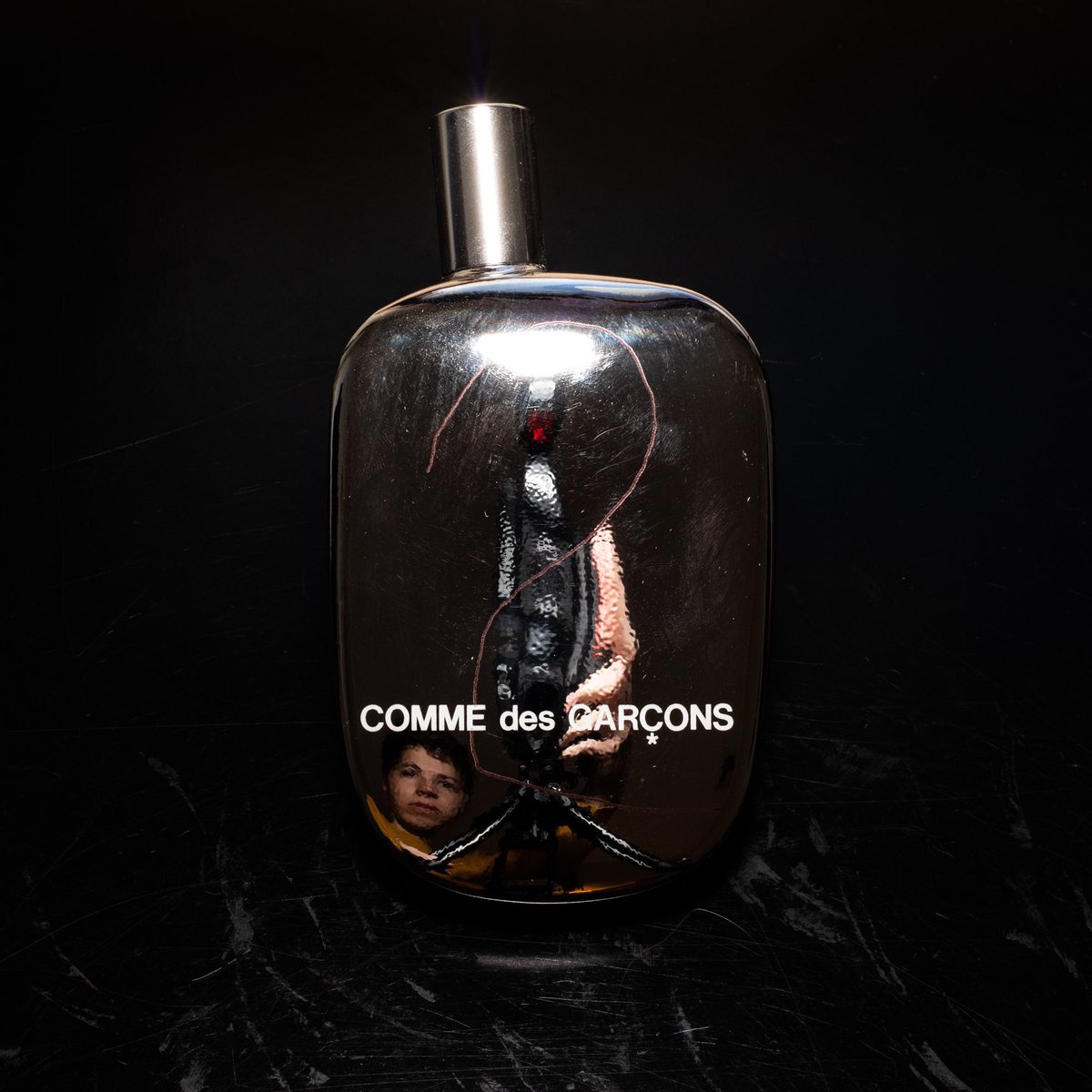
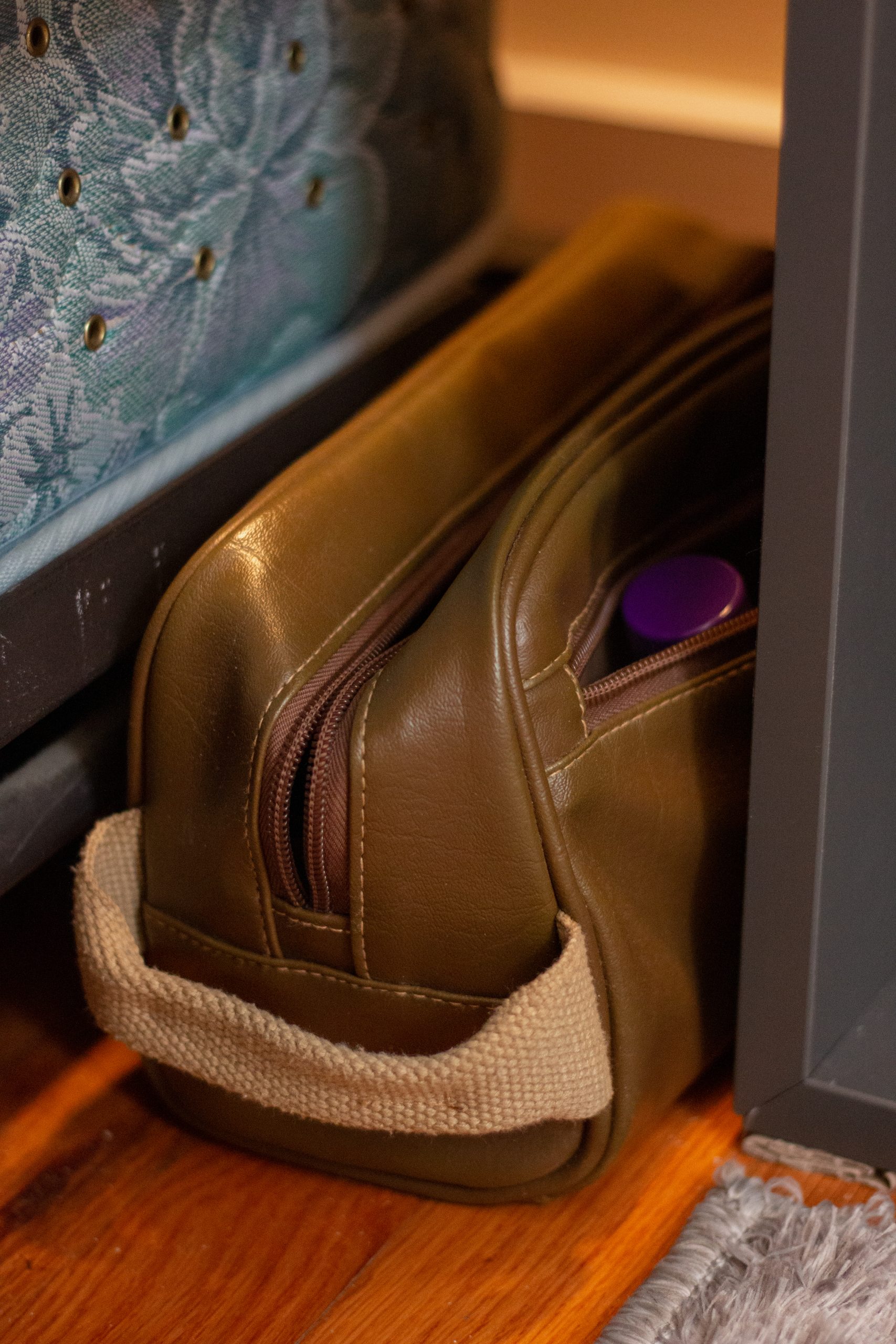
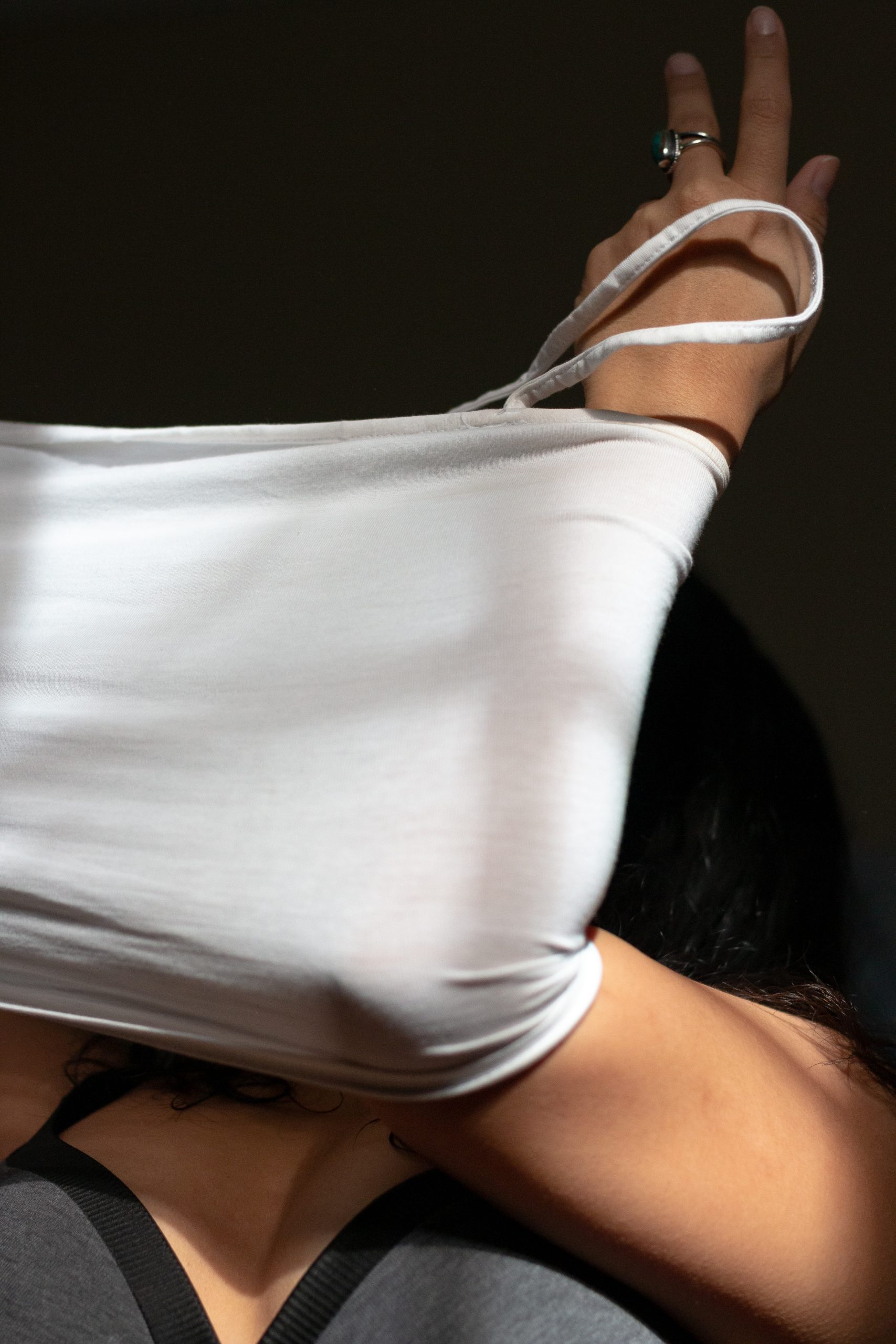
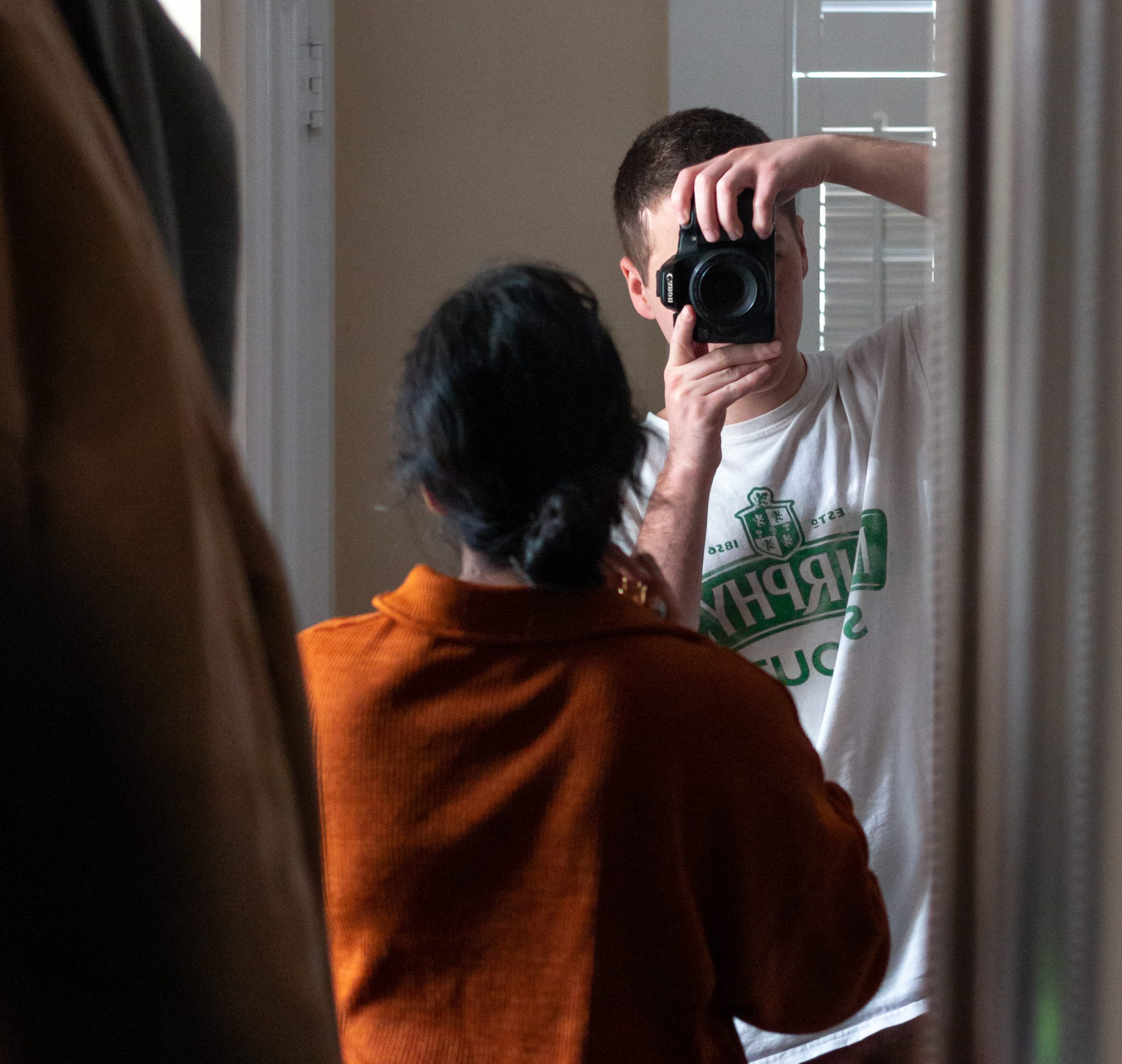
SIMÓN: The Freudian side of photography—I mean, I’m by no means a photographer, but I do get a perverse enjoyment out of, you know, voyeuristically looking at the world through a camera. To have essentially a professional license to be a voyeur—is that at play here with your work? Does holding a camera unleash your male gaze?
DeNICOLA: [Laughs] I can be quite reserved and self-conscious about how I’m using a camera. I tend to photograph things that have meaning to me in some way. I’m not really interested necessarily in, like, the games that you play with image-making—like, the way some people rely on visual trickery to concoct an interesting composition. I’m not necessarily interested in like, “I want to go here so I can get a picture of this amazing landscape.” For me, there has to be an interpersonal connection, like I’m with my girlfriend or my friend and then we decide to go to this place and then this is what happens while we’re there. It’s about me looking at them and me looking at my environment.
SIMÓN: Yeah, I saw that in the photos of your trip to LA that you posted on Twitter—that rapid snapshot video of image after image of your trip. When I hold a camera, everyone becomes an object. It’s like we talked about before with Playboy magazine, which I just got like a crate-load of today—it’s interesting to be in that cold, impersonal headspace where people become objects, you know, through a lens. But with your photography, it feels almost the opposite—there’s still a human touch, it’s how you said: interpersonal. To you, the photographer, which is interesting. There’s probably something similar happening with the connections you’re making through your podcast as well.
DeNICOLA: When it comes to photography, I’m really interested in how narrow it can be. With some of my other artistic endeavors, my podcast included, for me it’s about the narrowness of what I know and my experience—and, you know, with some hope to universalize the very specific. Season 1 of the podcast, I noticed I was in some way trying to declare things in a general way about the general state of being, whereas season 2 is more about direct experience. But definitely when it comes to photography, it’s totally about very specific things to me.
SIMÓN: For season 1 and the episode titles—you know, like “Death of Music,” “Death of Cinema,” “Death of Art”—when we last spoke about this, I mentioned Roland Barthes’ 1967 essay “The Death of the Author” and you said that didn’t inspire the episode titles, but this all somewhat relates to this common feeling we all have of, like, witnessing a mass culture extinction event—witnessing the rapid death of all these institutions and the death of authorship throughout virtually all of media, and the overarching feeling that everything is transitioning into something else.
DeNICOLA: I think it’s easy to—you know, like that Woody Allen movie Midnight in Paris, I think it’s easy to look at the past with rose-tinted glasses and say that everything was better. Like, “Oh, they were doing shit in the ’60s, but not now.” But I think that, now, everybody to some degree recognizes how political correctness and 2010s liberalism have really thwarted thriving art, and so in some way I needed the podcast to be a fresh start where we can declare in this moment in time that all these things are dead, because, you know, maybe mediums do have a finite lifespan—but I don’t want to discourage anyone from trying. Like, it’s okay to be naïve and idealistic enough to actually try to make something, try to create something.
SIMÓN: Personally, I’m a big fan of starting projects with the theme of “death,” to essentially frame death as a beginning. I did that with the mock print issue for American Vulgaria that I created for myself—I titled it “The End” and, you know, the phoenix rises and all that.
DeNICOLA: Totally. We’re in the afterlife here, in this case.
SIMÓN: Exactly [laughs]—but in general it really does seem that we’re beyond something and just collectively floating in the ether, repetitively retreading past trauma while looking for a new body to inhabit. It’s like Gaspar Noé’s Enter the Void.
DeNICOLA: Yeah, covid and, more primarily, the internet have really sprung this upon us. We’ve entered this kind of new eternal, this new infinite—this new communism, basically. You know, everyone’s incentive structures have changed and we’re now in a new digital landscape and nobody knows how to navigate it, so everybody’s trying to find their footing.
SIMÓN: I mean, the “Death of” stuff seems fairly tongue in cheek. Fundamentally, the podcast is quite optimistic, and the vibe I get from your work and attitude in general is that there’s much to look forward to.
DeNICOLA: Yeahh I think so. I think especially with all the cool people I’ve been meeting and with what they’ve all been up to, there’s just a lot of synergy. And there’s a lot of encouragement, too—everybody’s just really awesome and we all just want to create things. I mean, look, man: you’re putting yourself out there when you’re putting out a podcast, and people can hear you talk for one, two hours at a time, and not everybody’s going to like what you say. I remember putting out the “Death of” series, and some people were like, “Oh my God, I can’t believe you’re declaring things dead, there’s so much good art out there right now.“
SIMÓN: That’s like when Nas declared hip-hop dead—and then he just kept rapping.
SIMÓN: Of all the arts, photography was one of the more elusive mediums for me to come to terms with as a fine art—maybe because I was attributing more to the machine of the camera than to the man holding the camera—but you know who sort of cracked that code for me was Gaspar Noé. The way he uses the camera in his movies as like an extension of our consciousness, especially in Enter the Void, where the camera’s position in relation to its characters—you know, first-person, third-person, et cetera—signifies a different layer of consciousness. Basically, the camera is an extension of consciousness—
DeNICOLA: Yeah, and of our eyes.
SIMÓN: Yes, more so the eyes I suppose—and but the way Noé takes advantage of that extension to visualize the out-of-body experience of psychedelic drugs and the psychedelic experience of death really resonated with me. He just opened my mind to how the camera interrelates with the world. Because through photography, virtually all of the world becomes visible to me—you know, I’m just some guy in bumfuck Montana, but I can see pics of Russia and Africa and Alabama, and as a result I become on some level conscious of these places. I mean, not to be a sophomore stoner philosophy major, but it’s like the camera is the third eye.
DeNICOLA: I mean, photography is used in all different ways, from documentation to art-making to everything in between. It’s a tool, and as my friend David said, “You are a smart user of a stupid tool.” You can only capture a slice of a moment of a particular vantage point at a particular time, and you are a certain person and you have a certain bias. I think photography can open up and expand people in a humanitarian way, but in other ways it’s very specific and selfish because it’s really only concerned with what’s in front of the camera at that very moment in time. But and then there’s also this very existential component—like how before you were talking about how when we look back at photographs, they seem “vintage” and aesthetically fashionable to a certain degree. I mean, that could be a fault of photography, that it gets easily clouded with nostalgia. What’s beautiful about that though is that you really understand the timeline of your life and how you looked in certain moments—and that you can’t go back. Photography shows that we’re always moving forward in some way. It’s interesting because photography is for me a subtractive medium. So like in music, you could be working on a song for weeks—you’re just adding and adding and adding to it—but with photography, you could take a whole bunch of photos one day, but you could never create that again. Of course, something could be similar, like if you have a studio setup, but it’s still different because that moment has passed. But that’s like an existential thing even in how we’re speaking right now, because each moment is like “now”—I mean “now,” I mean “now,” I mean “now”—as soon as “now” has left the tip of my tongue, it’s already in the past now. It’s bizarre to think about.
SIMÓN: Yeah, every “now” is a picture or frame proceeding in a linear, sequential order, like in a movie. I think watching movies is what creates that framing or understanding of experience: that time proceeds in linear, sequential “now” moments. Prior to photography, if you wanted to “capture a moment,” you sat in front of an easel and canvas and painted in layers, not frames—and you typically did this from a stationary singular viewpoint. Whereas cameras made it easier to capture a moment from multiple angles—you can circle around an event and take many pictures, so now your singular point of view is fragmented. That’s part of Marshall McLuhan’s take on cubism: that the rise of photography is what inspired the cubist’s fragmented multi-perspective style compared to the linear vanishing-point perspective of the Renaissance. But movies are still just photo-frames lined up in linear order, which is…… sorry, I’m just thinking out loud at this point.
DeNICOLA: No no—photography is a base medium in that way. Thinking of movies and photography and time—that LA photo series was kind of rapid-fire, almost like a slideshow you could say to a certain degree, and part of that was because that’s what it’s like to experience those moments during a trip. Photography does have the potential to be nonlinear, unlike movies where usually there’s a start and an end. Recently, though, I am interested in how things naturally happen in chronological order. Some of this conversation has been existentialist thinking or—and I’m not a fucking philosopher [laughs]—or thinking about death and time, and when it comes to my photography, I really like the idea of things having a start and an end. You know? Like the LA trip, I just went there for a week, and I like the idea that everything I photograph there for that week’s time is that particular moment and that’s the project. I’m not interested in being like, “I’m going to go to LA and capture its essence.” For me, it’s about my experience of being there in that particular place at that particular time. Right now, I’m very focused on the immediately and also, given the nature of digital mediums, I think it’s just important not to edit out too much of what happened, you know? With paper and ink, it’s all very costly, but with the internet, I could just put a thousand pictures out there and that’s everything. You don’t have to discriminate, and so… that’s just something I’ve been thinking about, too.

SIMÓN: Oh! One last thing to get on record: why “Saltbox”?
DeNICOLA: Oh yeah, well, I chose the Morton Salt girl one day—I named her “Umbrella” by the way, even though she probably already has a name, but whatever—but I chose her because, well, for one, I just like the graphic design of it. Design isn’t always art, but it can be beautiful. Also, I live in Connecticut in a sort of colonial place I would say, and the New England “saltbox” is a common housing style, so I just figured: Morton Salt girl, New England saltbox, I like her, it’s where I’m living—it all just works out. Saltbox Podcast.
SIMÓN: Dope. Okay perfect, you heard it here first.
See Matthew DeNicola’s “GM GF” photo series in AMERICAN VULGARIA Magazine Issue #1: BUY now
*
For more Matthew DeNicola, head to matthewdenicola.com. Follow Matt on IG @mattiopattio.


